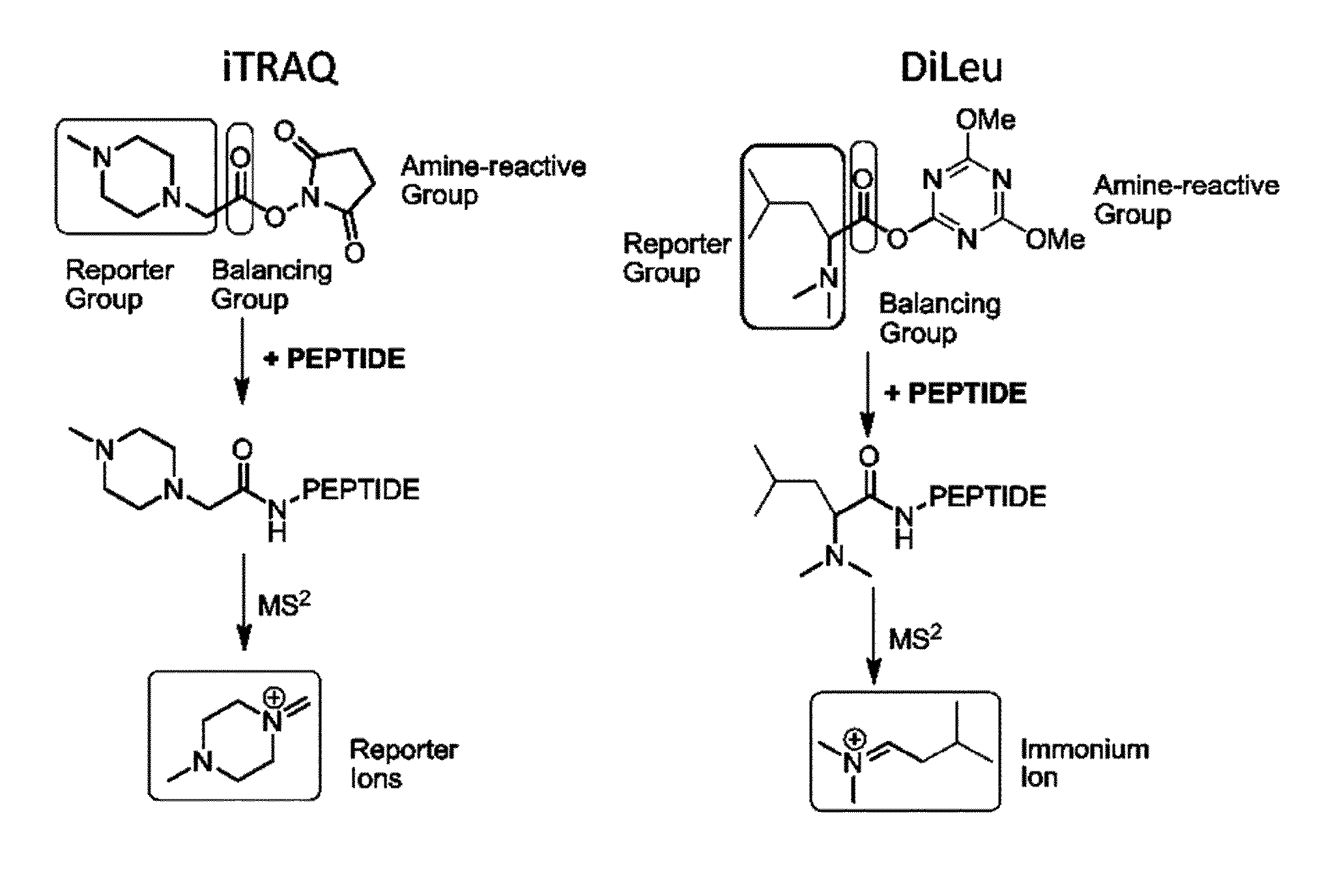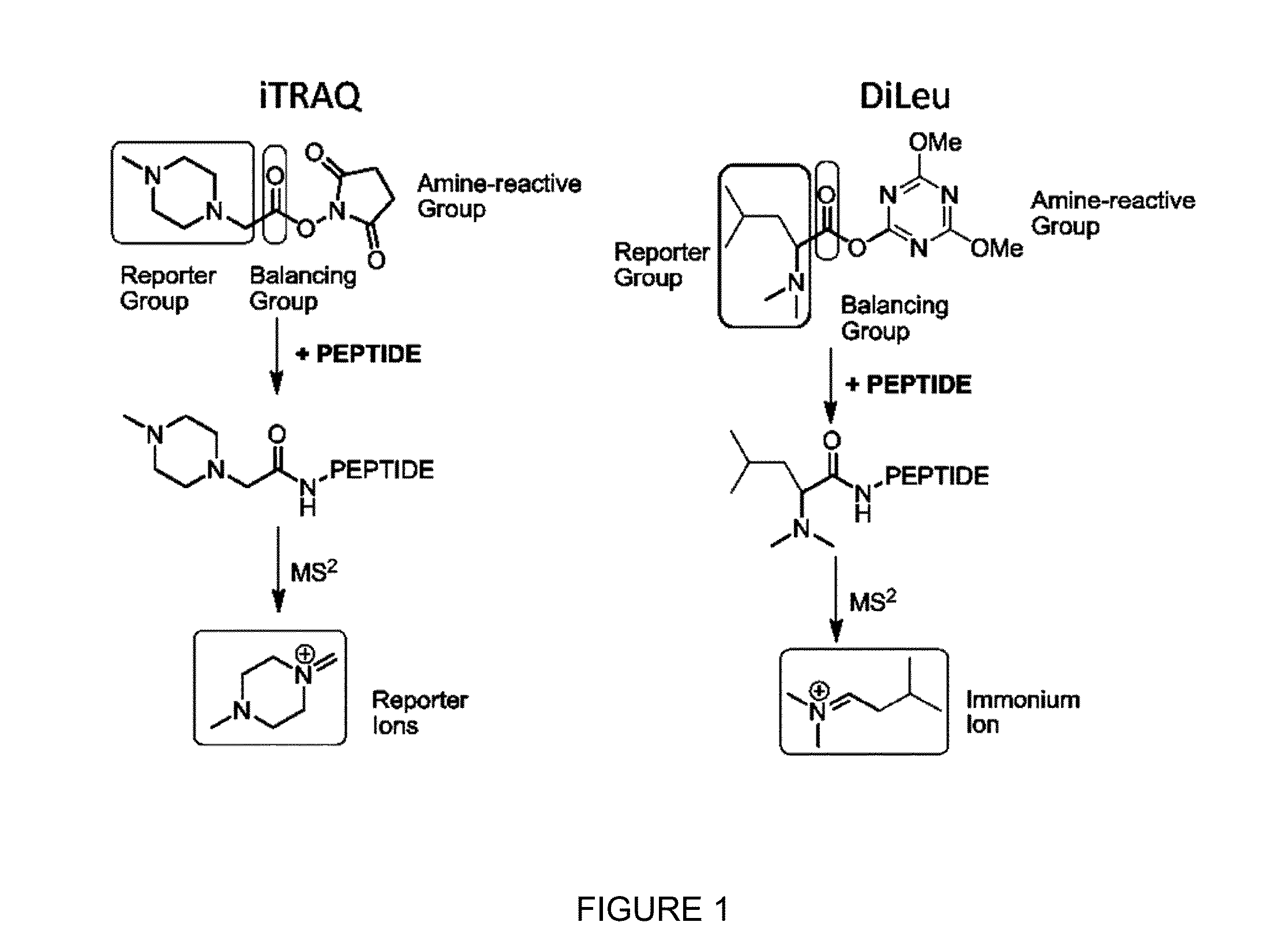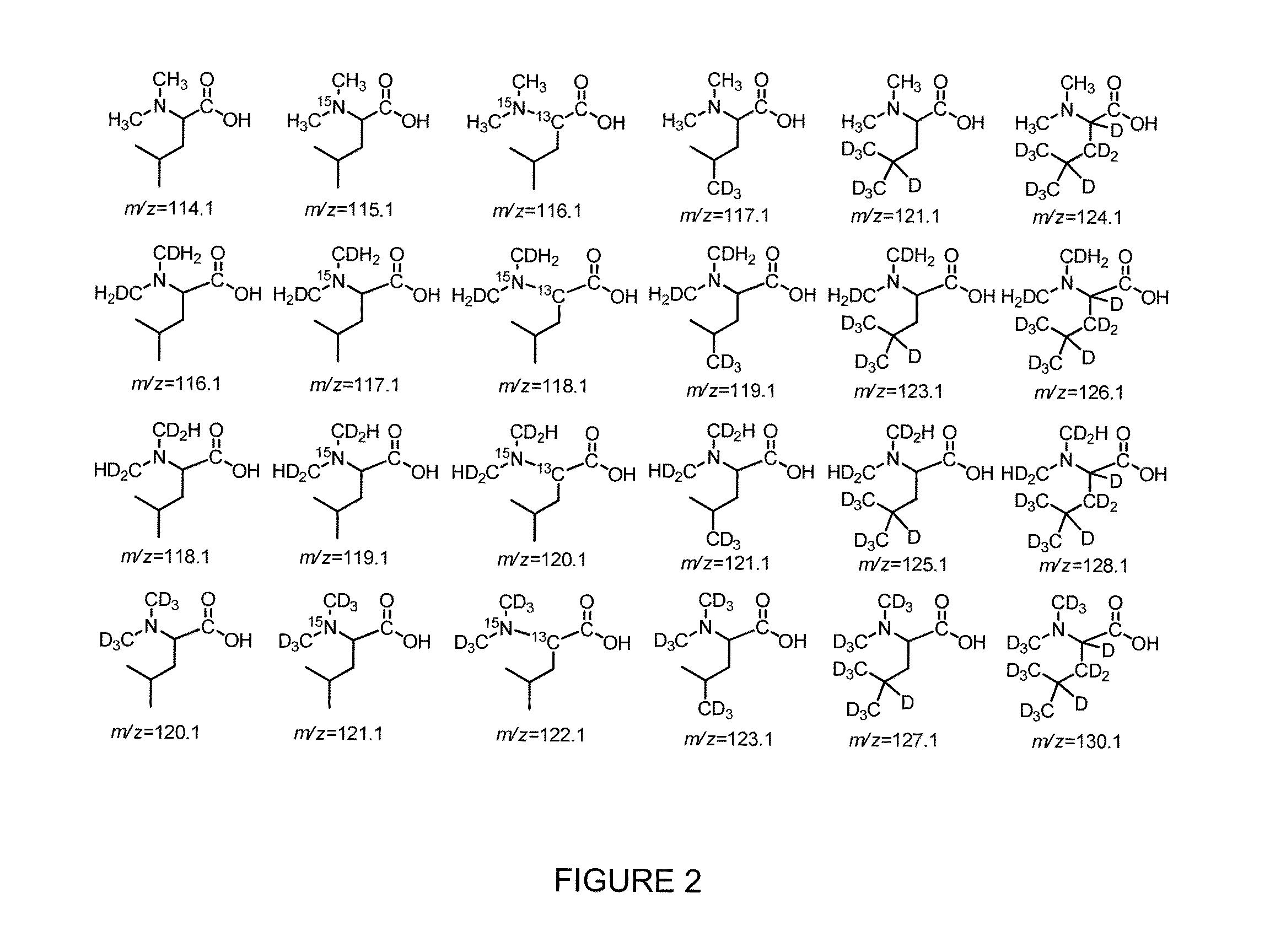Isobaric tandem mass tags for quantitative proteomics and peptidomics
a technology peptidomics, which is applied in the field of isobaric tandem mass tags for quantitative proteomics and peptidomics, can solve the problem of the limiting factor of previous isobaric tagging reagents, the number of atoms able, etc., and achieve the effect of reducing the cost of peptidomics and high quantitation efficacy
- Summary
- Abstract
- Description
- Claims
- Application Information
AI Technical Summary
Benefits of technology
Problems solved by technology
Method used
Image
Examples
example 1
General Synthesis of Dimethylated Leucine 8-plex Reagents
[0252]All reagents were purchased from Sigma-Aldrich Chemical Company.
[0253]As illustrated in Schemes 4 and 5 presented below, synthesis of the 8-plex tagging reagents of the present invention involves coupling a dimethylated amino acid, dimethylated leucine (1) in this example, with an amino acid-benzyl ester hydrochloride, alanine benzyl ester hydrochloride (2) in this example, to yield dimethylated leucine alanine benzyl ester (3) followed by hydrogenation (4) and NHS ester activation (5). Different coupling agents as known in the art can be used to couple the dimethylated amino acid with the amino acid benzyl ester, such as DMTMM / NMM (Scheme 4) and EDC (Scheme 5). Alternative activation steps can also be employed as illustrated in Schemes 4 and 5.
[0254]
[0255]
[0256]FIG. 12 shows QTOF MS spectra validating products at each of the above synthetic steps: (1) dimethylated leucine, (3) coupling of dimethylated leucine and alanin...
example 2
Synthesis of Isotopic HCl.NH2-Ala-OBn (2)
[0257]The general scheme for synthesizing alanine benzyl ester HCl (2) is shown in Scheme 6 below, which is adapted from Guo, et al., J. Am. Chem. Soc. 2009, 131. 16018-16020.
[0258]
[0259]Boc-D4 Ala-OH (2.1). One gram D4 alanine (10.7 mmol) was suspended in anhydrous CH2Cl2 (20 mL) and stirred vigorously. Trimethylchlorosilane (TMSCl, 3 mL, 23.6 mmol, 2.2 times excess to alanine) was added in one portion and stirred at room temperature for 2 h. The mixture was cooled to 0° C., and N,N-diisopropylethylamine (DIEA, 3.35 mL, 19.26 mmol, 1.8 times excess to alanine) and Boc2O (3.5 g, 16.05 mmol, 1.5 times excess) were added sequentially. The reaction was allowed to proceed to room temperature and stirred for overnight. The resulting mixture was concentrated to provide an oily looking mixture which was then dissolved in EtOAc (100 mL). To this mixture, water was added (40 mL), and the solution was acidified with 1 N HCl. The separated organic layer...
example 3
Synthesis of DiLeu-Ala-OBn (3)
[0262]Compound 1 from Scheme 4 (175 mg, 1.1 mmol) was mixed with (326 mg, 1.18 mmol) 4-(4,6-Dimethoxy-1,3,5-triazin-2-yl)-4-methylmorpholinium chloride (DMTMM) and 390 μL (3.54 mmol) N-methylmorpholine (NMM) and compound 2 (216 mg, 1 mmol) in 10 mL of N,N-dimethylformamide (DMF). Reaction mixture was stirred at room temperature for 3-4 h till the solution became clear. Reaction completeness was monitored by thin-layer chromatography (TLC). Upon reaction completion, 100 mL of ethyl acetate (EtOAC) was added to the reaction mixture followed by 20 mL of saturated aqueous NaHCO3 and brine wash three times to pre-purify compound 3. Compound 3 was further purified by flash column chromatography (hexane / EtOAc). Alternatively, synthesis of compound 3 can be achieved using EDC as shown in Scheme 5.
PUM
| Property | Measurement | Unit |
|---|---|---|
| mass difference | aaaaa | aaaaa |
| mass | aaaaa | aaaaa |
| mass | aaaaa | aaaaa |
Abstract
Description
Claims
Application Information
 Login to View More
Login to View More - R&D
- Intellectual Property
- Life Sciences
- Materials
- Tech Scout
- Unparalleled Data Quality
- Higher Quality Content
- 60% Fewer Hallucinations
Browse by: Latest US Patents, China's latest patents, Technical Efficacy Thesaurus, Application Domain, Technology Topic, Popular Technical Reports.
© 2025 PatSnap. All rights reserved.Legal|Privacy policy|Modern Slavery Act Transparency Statement|Sitemap|About US| Contact US: help@patsnap.com



